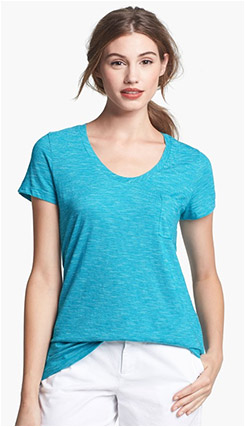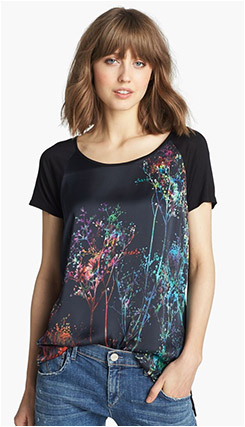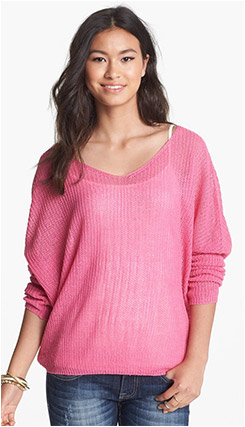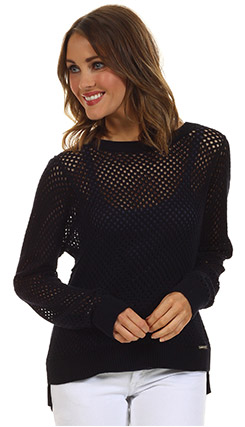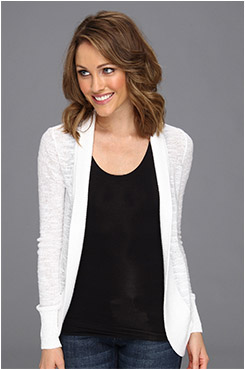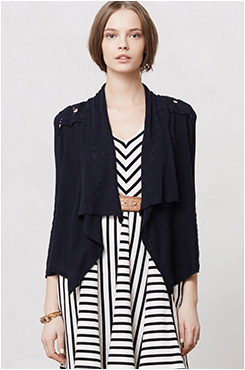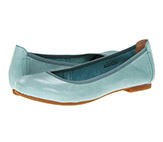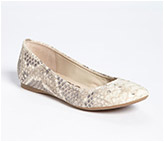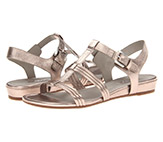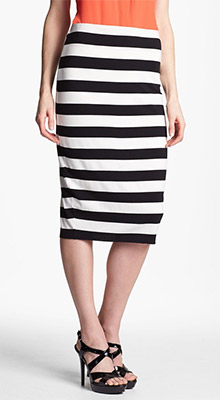 I recently helped a client create a set of outfits around a knitted midi skirt (shown on the right), which is another example of how the outfit creation process can begin with a single item. This client is a tall hourglass with a broad shoulder line. Her lifestyle is casual and she does not wear heels. She loves having a small wardrobe with many mix-and-match possibilities that she can repeat over and over again. The more outfits we create with fewer wardrobe items, the happier she is.
I recently helped a client create a set of outfits around a knitted midi skirt (shown on the right), which is another example of how the outfit creation process can begin with a single item. This client is a tall hourglass with a broad shoulder line. Her lifestyle is casual and she does not wear heels. She loves having a small wardrobe with many mix-and-match possibilities that she can repeat over and over again. The more outfits we create with fewer wardrobe items, the happier she is.
By following the same steps that we used to create outfits around a pair of trousers, we arrived at several casual skirt ensembles in about half an hour. The striped pencil skirt outfit formula for Mums on the go served as a frame of reference throughout the process.
Assess Fit to Set the Scene
I was with my client when she bought the skirt, but for good measure we assessed the item again to make sure that she was still feeling the skirt vibe for her casual lifestyle. After wearing only jeans, Ponte pants, leggings and shorts for years, the skirt was very much out of her comfort zone. But it was as comfy as a pair a pajamas and she was up for a change. The skirt fits in the same way as it does the model and covers her knees.
Keep Troubleshooting Tactics Top of Mind
As we combined tops, toppers and footwear with the skirt, I had three troubleshooting questions top of mind and we used them to figure out why some combinations weren’t working.
- Is it the length of the tops and toppers causing unflattering proportions?
- Is the contrast between the items, and the items and your skin tone, too high or too low?
- Will the outfit look better with heels?
Although my client does not wear heels, I still asked the question along the way when the outfit didn’t look right. If it’s a question of adding heels, we scrapped that combination and created flattering proportions in other ways.
Select an Assortment of Tops
The next step was to pull out all the tops that might work from my client’s closet and lay them on the bed with the skirt. As I selected the tops, I was thinking about her needs: her comfort zone, how to evolve her look, how the outfits reflect her style descriptor, and the settings in which she’ll be able to wear the outfits.
The neutral integrity of the skirt made all colours a possibility, so we didn’t feel restricted when it came to matching the black and white stripes with other shades. I stuck to regular length tops because those work best with this length of skirt. I left behind tops that did not provide enough coverage around the tummy area because my client is self-conscious about that part of her body. I also left behind the tunics because, although my client is tall, those outfit proportions would look better with heels.
Since the skirt was already outside my client’s comfort zone, AND because she does not tuck tops into skirts, I headed straight to two solid short sleeved, scooped neck big tees in turquoise and pink. They were very much inside her comfort zone. She smiled and loved the idea of just throwing them on over the bold rugby stripe and looking extra relaxed in a skirt. I suggested that this was as casual as wearing clamdiggers with a tunic, and that she could wear this combination daily in warm Summer weather. It needn’t be reserved for dressier settings.
Knowing that my client is an adventurous pattern mixer, and that stripes are a great pattern mixing vehicle, I pulled out a polyester-rich floral patterned top and panel printed tee with high-low hemlines to match with the skirt. Both pattens have black in them, which picked up the black stripe in the skirt thereby creating a cohesive visual. She liked the idea because it gave her more options to wear with the skirt.
We then pulled out a few cotton sweater options. A boxy oversized V-neck in neon pink and a navy mesh style with a welt that required a camisole. Both looked great. So far, we had six tops to wear with the skirt, which was more than my client bargained for. To keep things simple we left it at that. Having too many top options can complicate matters.
My client tried on all six tops with the skirt because looking at an ensemble on the bed is not enough. It’s extremely important to try on the complete combinations in front of a full-length mirror to check whether they are to your satisfaction. All the tops are “throw on” and therefore left untucked. No styling required other than the scrunching of long sleeves.
Introduce the Optional Topper
Toppers are not essential, but a great option for cool mornings and evenings, or arctic air conditioning. Again, as I went back to select topper options, I was once again thinking of her needs. My client must feel unrestricted while driving and reaching in her toppers, so we eliminated all fitted styles except a white and a blue denim jacket that worked very well with the skirt. The denim jackets looked great, but my client wasn’t feeling them anymore. On to something else.
My attention turned to soft and stretchy cardigans, because my client finds them very comfortable. I pulled out a cropped navy swingy cardigan with a short back and longer front, and a white cascading cardigan. Because there is no getting around the step of physically trying on the completed outfits, we tried both cardigans over all six combinations. Four emerged as winners. We liked the navy cardigan over the patterned tops and the white cardigan with the solid pink and turquoise big tees.
I then hauled out a mixed media ink blue knit and pleather moto jacket as a third topper option. Although fitted, it’s stretchy, so comfort was assured. It turns out that the moto worked best of all, and was an option over all six tops. Bonus.
Ground the Outfit with Footwear
An outfit may not need accessories, but it always needs footwear. There were two options for footwear here: casual ballet flats and sandals. No heels. So we pulled out a light turquoise pair of ballet flats, cream snakeskin flats, and two pairs of strappy gold sandals. The tapered length of the skirt did wonders to prevent the dumpy feeling a midi skirt can sometimes create when paired with a pair of flats.
We started working the different footwear options into the outfits, trying them all on in front of a full-length mirror. We were both amazed at how well the light turquoise ballet flats worked with each outfit. My client’s beautiful light turquoise eyes bookended the shoes to perfection. The cream snakeskin flats bookended her blonde hair, while the gold sandals were an all-round flattering, leg lengthening slam dunk.
For several of the outfits we found ourselves looking for a crisp pair of white flats to pick up the white of the skirt. And the snakeskin flats, although gorgeous, were not fast walking Mum on the go shoes. So we added a light and comfy pair of white flats to the shopping list.
Finish off with Accessories
Although I am outlining this process as a set of steps, it’s seldom this ordered in practice. In reality, we are trying on the accessories throughout the process as we get inspired.
My client sticks to sporting one handbag a season, so we finished off each outfit with the same white tote. A wedding ring and white watch also accompanied all the outfits. With the solid tops and sweaters we added a long turquoise pendant necklace to pick up the colour of the flats, or stuck to a short lucite beaded necklace. We left the pattern mixed outfits sans jewellery because there was a lot going on already.
Evaluate the Outfit Shortlist
I mentioned my client’s needs several times here, and it’s usually worthwhile to revisit those needs one more time with the final set of outfits. Since my client leads a casual lifestyle, we made sure that nothing that we put together made her feel too dressed up. After all, she was wearing a skirt as a busy Mum on the go for the very first time.
I suggested she break in the skirt by matching it with the big tees and sweaters, and then start introducing the more dressy pattern mixed outfits later, when she’s more used to wearing the skirt.
Then there is the all important happiness factor. Despite our analysis of fit, proportions, style descriptors and settings, ultimately what makes a good outfit is an emotional thing. So at the end of the process, I ask my client questions to assess how happy she feels in the outfit. Does it feel fussy? Do you feel attractive, interesting and healthy in the outfit? Do you feel self-conscious?
Sometimes though, you need to push the boundaries of your comfort zone and violate your happiness factor in order to take yourself out of a style rut and try something new. The important thing is to do this consciously. So wear the outfit if you know it’s testing your comfort zone, but don’t let it through if you have a nagging suspicion that something feels very off.
Take It on the Road
Evaluating an outfit in front of a mirror is not the final step. If you like it at home, you know it has great potential, but you have to road test the outfits in motion, in real weather, and in the intended setting before you can give it the stamp of approval.
